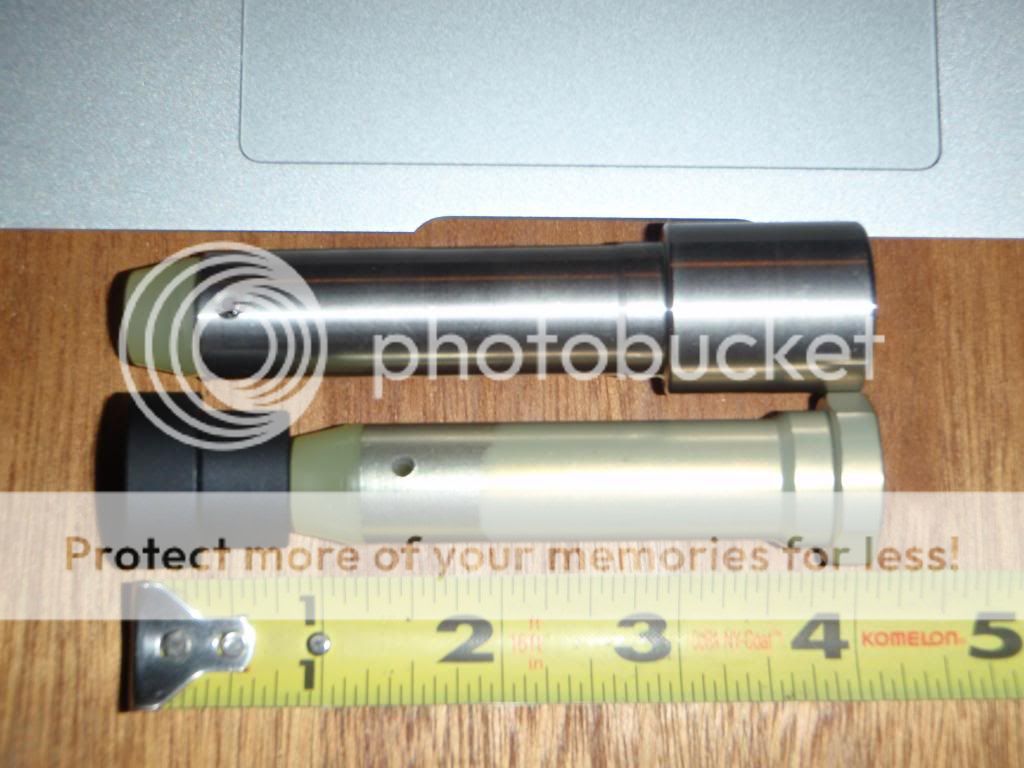You are using an out of date browser. It may not display this or other websites correctly.
You should upgrade or use an alternative browser.
You should upgrade or use an alternative browser.
AR Handguard help/question
- Thread starter stigmata
- Start date
95jza80tt
.270 WIN
I just built my first AR and I chose to go 9mm Glock pattern. The 2 most popular pattern are Colt or Glock dedicated lowers. The only other specified parts would be barrel, bolt carrier, buffer for specific intended weight of your choice, muzzle device for the proper round and if using a standard size buffer maybe a spacer to help prevent bolt over travel that can lead to broken bolt catches if you have a last round bolt hold open. Everything else can be standard milspec AR or aftermarket of your choosing. Lower parts kits minus mag release can all be milspec. Almost all milspec triggers work except for a select few aftermarket fancy ones. Other then that its all your standard stuff. I haven't had time to shoot mine at all but wanted to get it done in December before CA goes full retard on the AR stuff.
The Glock lowers are relatively new design in terms of how long the "Colt" style, or even the Olympic Arms style of 9mm uppers are concerned.
I have zero experience with the glock style.
But for the Colt style, here are some things that will help you.
A ramped bolt reduces stress on the hammer when the bolt cycles. And especially don't use a step faced hammer.
A set of Anti rotational pins may also help prevent damage to the lower receiver fire control pin holes because it's well documented that the extra stress may
If you use a lot of imported 9mm ammo, an extra power hammer spring may help in reliability.
I'm not sure what you're talking about the length of the buffer and adding to them. All the 9mm buffers I've ever used have been Car length, but heavier due to the internal weights.
I have zero experience with the glock style.
But for the Colt style, here are some things that will help you.
A ramped bolt reduces stress on the hammer when the bolt cycles. And especially don't use a step faced hammer.
A set of Anti rotational pins may also help prevent damage to the lower receiver fire control pin holes because it's well documented that the extra stress may
If you use a lot of imported 9mm ammo, an extra power hammer spring may help in reliability.
I'm not sure what you're talking about the length of the buffer and adding to them. All the 9mm buffers I've ever used have been Car length, but heavier due to the internal weights.
95jza80tt
.270 WIN
The Glock lowers are relatively new design in terms of how long the "Colt" style, or even the Olympic Arms style of 9mm uppers are concerned.
I have zero experience with the glock style.
But for the Colt style, here are some things that will help you.
A ramped bolt reduces stress on the hammer when the bolt cycles. And especially don't use a step faced hammer.
A set of Anti rotational pins may also help prevent damage to the lower receiver fire control pin holes because it's well documented that the extra stress may
If you use a lot of imported 9mm ammo, an extra power hammer spring may help in reliability.
I'm not sure what you're talking about the length of the buffer and adding to them. All the 9mm buffers I've ever used have been Car length, but heavier due to the internal weights.
Apparently in the early years of the colt 9mm AR SMG days using standard carbine length buffers when the bolt cycled back it was rare but possible for shell casing to get lodged in the trigger housing. This is inherent to the 9mm bolt because unlike the standard 223/556 BCG where the bolt is seperate from the carrier, the 9mm carrier is the bolt so it is shorter then a factory milsepc AR BCG/Bolt. The engineers at colt came up with a spacer to put in at the end of the buffer spring to shorten the stroke of the bolt enough so there was not enough space for a spent shell casing to get into the trigger group assembly. It also helped with the other issues of breaking bolt catches by removing that extra travel not giving the bolt enough room to accelerate and slam into the bolt catch. Without the spacer the system still works but would eventually cause premature wear and possible problems over time. There are companies that sell 9mm AR specific buffers that are longer to accomplish what the spacer did.
Here is a picture of a Spikes tactical spacers.

Pictured here is a heavy buffers 9Q buffer vs. a carbine length with the spacer

